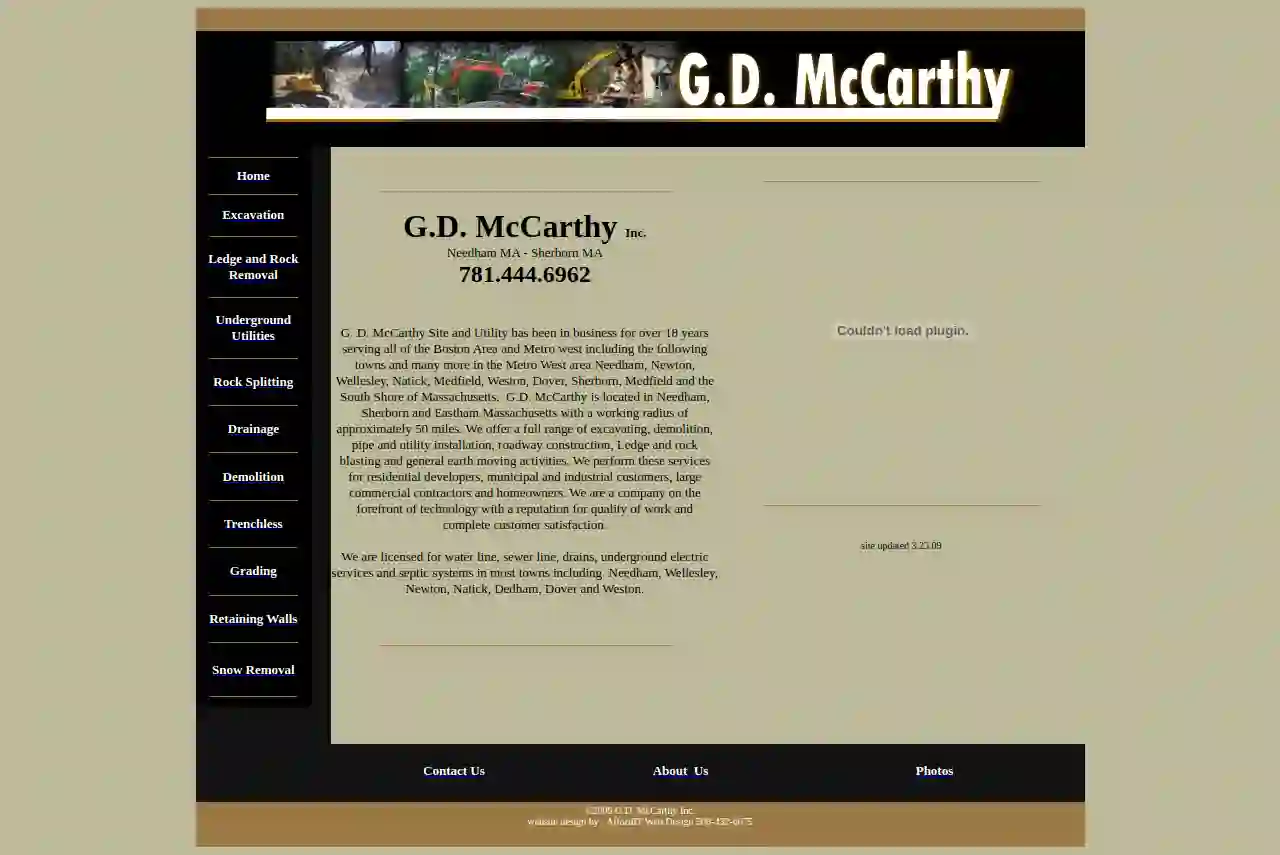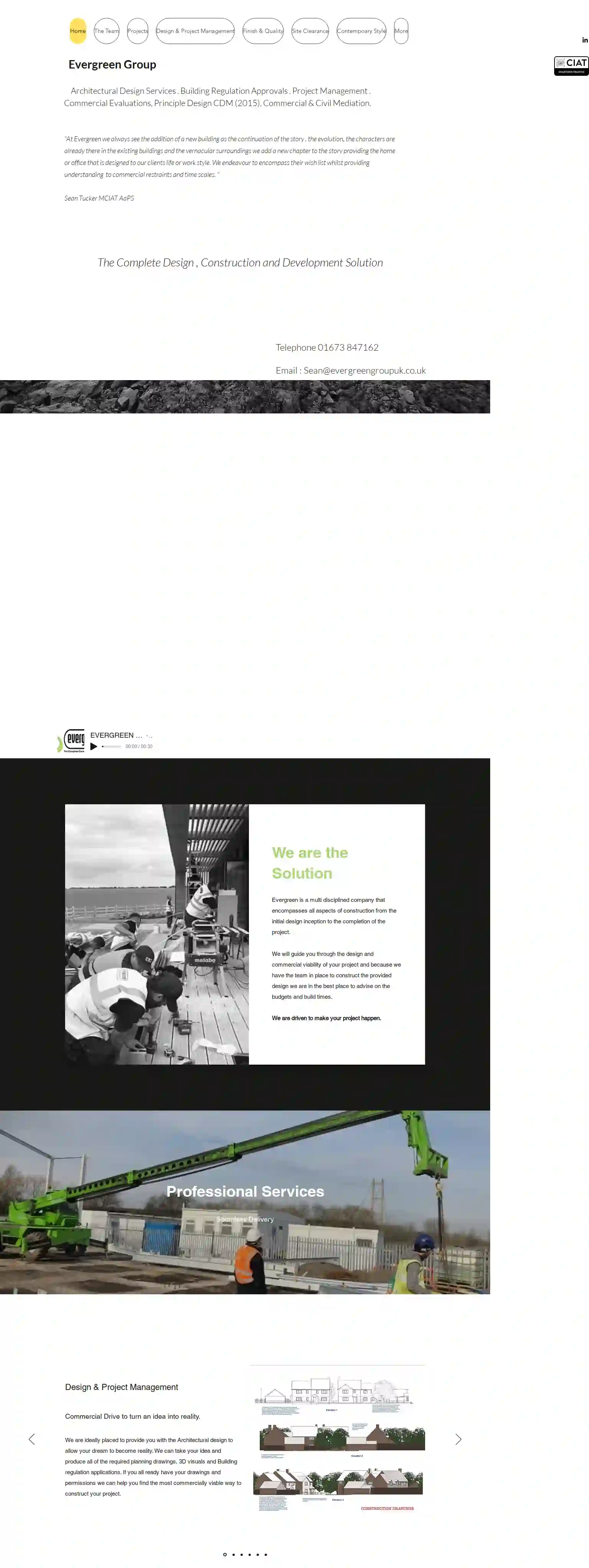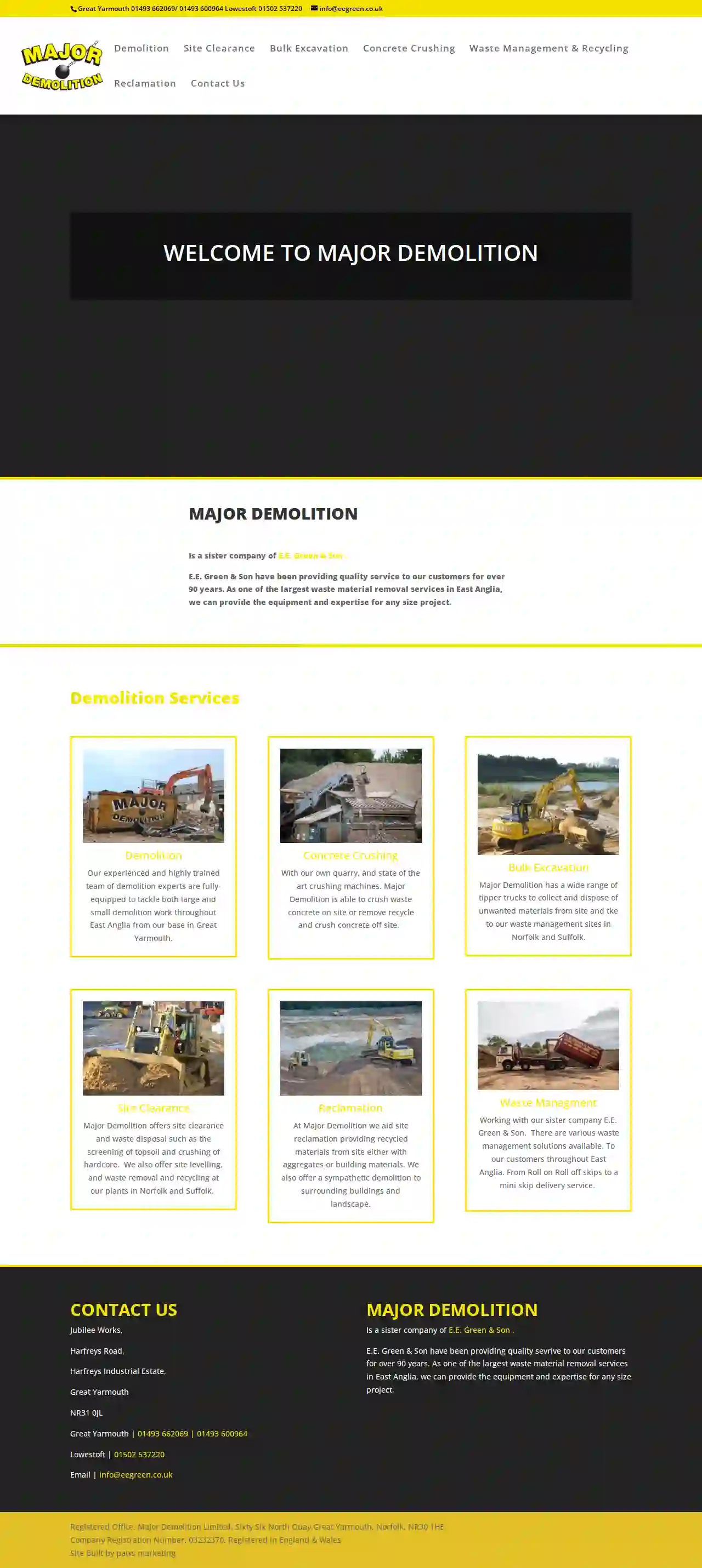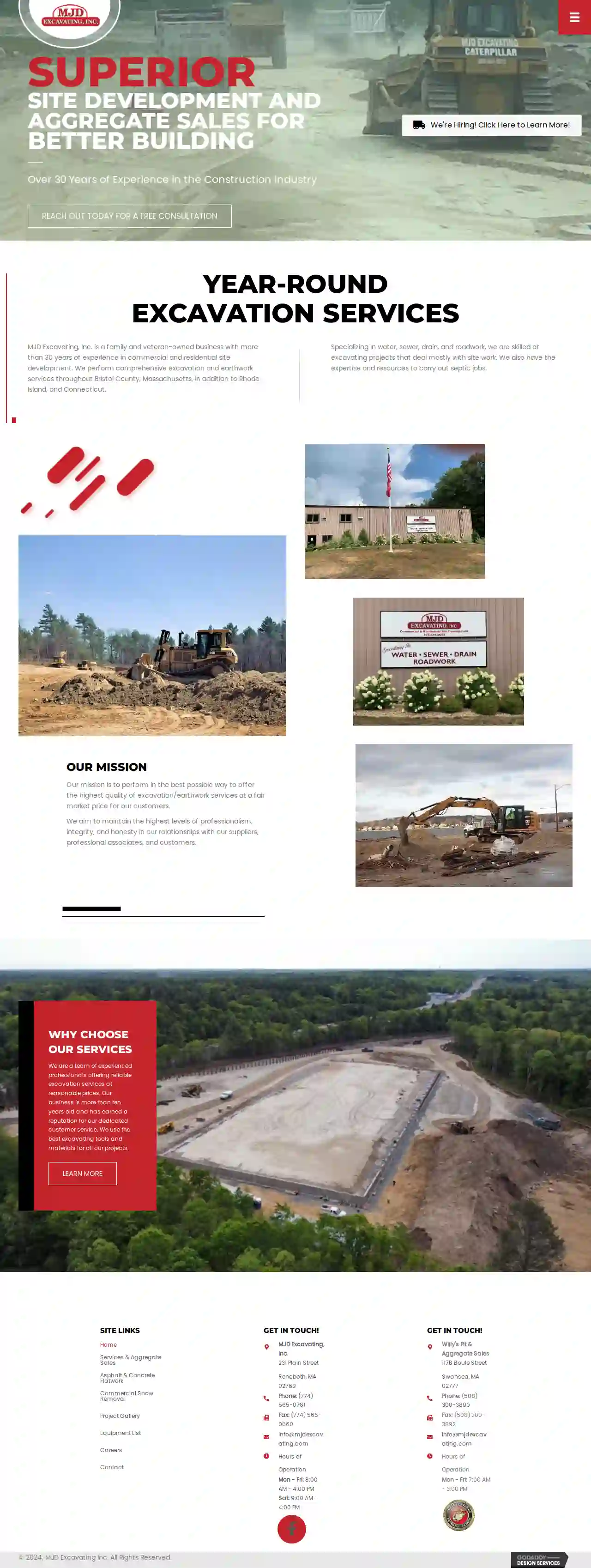Demolition Contractors Deeping Saint James
Top Demolition Services in Deeping Saint James
Get 3 FREE Demolition Contractors quotes for your project today! Compare profiles, reviews, accreditations, portfolio, etc... and choose the best offer.

Archaeological Project Services
51 reviewsThe Old School, Cameron Street, The Old School Cameron Street Heckington Lincolnshire, Heckington, NG34 9RW, GBAbout APS Archaeological Project Services (APS) is a long-established organisation offering a comprehensive range of consultancy and fieldwork services. Based in Heckington, Lincolnshire, we serve clients across the construction and development industries, public bodies and private individuals throughout the country. Commission us APS offer cost-effective, tailor-made solutions to all archaeological and cultural heritage needs in the planning and development processes. Our highly experienced project management team will respond quickly to find the right solution for your project, from initial planning through site investigation to mitigation and report publication. Community Support for community-led heritage projects
- Services
- Why Us?
- Gallery
Get Quote
K W Timmins & Sons Ltd
The Cottage, Tillbridge Lane, Sturton By Stow, LN1 2BP, GBFamily-run in Lincolnshire Since 1975 Timmins & Sons: established Groundworks & Agricultural Contractors We work with commercial & domestic customers within 50 miles of Lincoln. Explore how we help: I’m looking for a groundworks company Discover Service » I’m looking for an agricultural contractor Discover Service » I need land maintaining & looking after Discover Service » I’m looking for operated plant hire Discover Service » "Quality build and great team of lads" Ken Martin We're one of the only agricultural contractors in the area to offer... Forestry Mulching View Service Concrete Crushing & Screening View Service Discover some of the reasons our customers love to work with us: Local Contracting & Plant Hire Reliable & Trustworthy Adheres to Time Scales Get the job done right With over 35 years of dedicated construction groundwork and agricultural services. The Timmins family has been a dedicated agricultural contractor and plant hire service provider since 1975. Our values are the same today as they were over 35 years ago – a commitment to providing excellent agricultural and construction groundworks, underground irrigation works, farm contracting, operated plant hire, land maintenance, machinery and equestrian groundworks. Need a contractor to offer you a one-stop service? K W Timmins can offer the full works, from bespoke fabrication, agricultural contracting, groundworks, plant hire, and maintenance services - we can do the whole thing. Let us help your business run smoothly, we work hard to meet all your expectations and ensure everything is delivered to specifications and on time! About KW Timmins > Groundwork Services in Lincolnshire Need to prepare your site? We provide groundworks for commercial and industrial construction projects including foundations, site preparation, drainage and sewage. Concrete Crushing & Screening Discover Service » Full Screening Discover Service » Forestry Mulching Discover Service » Laser Screed Concrete Discover Service » Drainage Discover Service » Utility Cable & Water Pipe Laying Discover Service » Underground Irrigation Systems Discover Service » Site Clearance & Preparation Discover Service » operated plant hire We offer a comprehensive range of modern plant operated by our skilled and experienced workforce for all your plant hire needs. Tracked Jaw Concrete & Stone Crusher Extec & Sandvik Tracked 3way Split Screen Machine Tractor and Mulch/Flail Mowers Caterpillar, Hitachi and Bobcat 360 Tracked Excavators Vermeer 5750 4 Wheel Drive Trencher Terex, Thwaite
- Services
- Why Us?
- Testimonials
- Gallery
Get Quote
G. D. McCarthy
Needham MA, Sherborn MA, Needham, GBG.D. McCarthy Inc. - Your Trusted Excavation and Utility Experts G.D. McCarthy Site and Utility has been serving the Boston area and Metro West for over 18 years, building a reputation for quality work and complete customer satisfaction. We are a company on the forefront of technology, committed to providing exceptional service to our clients. Our team of experienced professionals offers a full range of excavating, demolition, pipe and utility installation, roadway construction, ledge and rock blasting, and general earth moving activities. We serve residential developers, municipal and industrial customers, large commercial contractors, and homeowners. We are licensed for water line, sewer line, drains, underground electric services, and septic systems in most towns, including Needham, Wellesley, Newton, Natick, Dedham, Dover, and Weston. We are located in Needham, Sherborn, and Eastham Massachusetts with a working radius of approximately 50 miles. We are proud to serve the following towns and many more in the Metro West area: Needham, Newton, Wellesley, Natick, Medfield, Weston, Dover, Sherborn, Medfield, and the South Shore of Massachusetts.
- Services
- Why Us?
- Gallery
Get Quote
C. Pereira Excavation & Hardscape
513 reviewsBoston, GBAbout us Meet William Pereira, the visionary founder of CPereira Excavation & Hardscape!💡🌿🏗️💎Born and raised in Brazil, William brings his expertise in outdoor design and construction to Holbrook, MA. With a deep commitment to serving our community, we specialize in top-quality excavation and hardscape solutions. At CPereira Excavation & Hardscape, we transform outdoor spaces with precision and creativity. From excavation projects to stunning hardscape installations, our skilled team delivers exceptional craftsmanship every step of the way. Ready to elevate your outdoor living? Contact us today and experience the difference William Pereira and our team can make. Let’s bring your vision to life and create remarkable outdoor spaces that you’ll love.
- Services
- Why Us?
- Our Team
- Testimonials
- Gallery
Get Quote
Evergreen Construction (Market Rasen) Limited
The Workshop, Friesthorpe Road, Buslingthorpe, LN3 5AQ, GBEvergreen Group: Your Complete Construction Solution Evergreen is a multi-disciplinary company that encompasses all aspects of construction, from the initial design inception to the completion of the project. We guide you through the design and commercial viability of your project, and because we have the team in place to construct the provided design, we are in the best place to advise on budgets and build times. We are driven to make your project happen. We are ideally placed to provide you with the Architectural design to allow your dream to become reality. We can take your idea and produce all of the required planning drawings, 3D visuals, and Building regulation applications. If you already have your drawings and permissions, we can help you find the most commercially viable way to construct your project. At Evergreen, we always see the addition of a new building as the continuation of the story, the evolution. The characters are already there in the existing buildings and the vernacular surroundings. We add a new chapter to the story, providing the home or office that is designed to our clients' life or work style. We endeavor to encompass their wish list while providing understanding to commercial restraints and time scales.
- Services
- Why Us?
- Our Team
- Gallery
Get Quote
Clearsafe Knotweed
4.934 reviewsAlltwen, Pontardawe, SA8 3AL, GBClearsafe Knotweed: Your Trusted Partner for Japanese Knotweed Removal Clearsafe Knotweed is a leading provider of Japanese knotweed removal and management services across the UK. We are a team of experienced and qualified professionals who are dedicated to providing our clients with the highest quality service and peace of mind. We understand the challenges that Japanese knotweed can pose to homeowners, businesses, and developers, and we are committed to providing effective and sustainable solutions. Our Services We offer a comprehensive range of services to meet the needs of our clients, including: Japanese knotweed surveys and assessments Treatment plans and management strategies Japanese knotweed removal and eradication Insurance-backed guarantees Expert advice and guidance Why Choose Clearsafe Knotweed? We are committed to providing our clients with the highest quality service and peace of mind. We are: Experienced and qualified professionals Fully insured and accredited Dedicated to providing sustainable solutions Committed to customer satisfaction Contact Us Today If you are concerned about Japanese knotweed on your property, please contact us today for a free consultation. We are happy to answer any questions you may have and provide you with a no-obligation quote.
- Services
- Why Us?
- Testimonials
- Gallery
Get Quote
Top Rank Roofing & Masonry Boston
54 reviews317 New Boston St., Woburn, 01801, GBQUALITY ROOFING & MASONRY IN BOSTON Looking to have your roofing, chimneys or masonry renovated, improved upon, extended or a new one installed in Boston? Top Rank Roofing And Masonry can deliver on cost and on time. We cover all styles of roofing & masonry in Boston. STOOPS, STEPS, WALKWAYS Looking at having your stoop, walkway or steps replaced or repaired? We can provide you with a great low cost option. Boston masonry specialists can handle all styles of masonry, natural or manufactured. Call us now to get a quote! PATIO AND TERRACE SERVICES Looking to have some work done on the patio or terrace at your home? Let Top Rank Roofing And Masonry help you with it. We can cater for all types of patio and terrace installations, large or small. Our team is fully qualified and certified in the construction and handling of all types of materials used in patios and terraces. Call us now for more information and a free consultation. QUALITY ROOFING, CHIMNEYS, PATIOS, STOOPS, STEPS AND WALKWAYS Interested in having your roofing, chimneys or patio renovated, improved upon, extended or a new one installed? Top Rank Roofing And Masonry can deliver on cost and on time. We cover all styles of chimneys, roofing, walkway paving, cobble stone with paving and many other styles of masonry for Boston. We are a 3rd generation family business that believes in delivering the highest quality work and customer service possible to all our clients. We hope you enjoy looking around our website. Make sure to check out services page and if you would like a free no obligation quotation, call us now on Office: (617) 719-1219
- Services
- Why Us?
- Testimonials
- Gallery
Get Quote
Major Demolitions
Jubilee Works, Harfreys Road, Harfreys Industrial Estate, Great Yarmouth, NR31 0JL, GBWELCOME TO MAJOR DEMOLITION Major Demolition is a sister company of E.E. Green & Son. E.E. Green & Son have been providing quality service to our customers for over 90 years. As one of the largest waste material removal services in East Anglia, we can provide the equipment and expertise for any size project.
- Services
- Why Us?
- Gallery
Get Quote
D&D Excavation
11 reviewsBoston, GBAbout DD Excavation DD Excavation is a locally owned and operated business dedicated to providing high-quality excavation services to the [City, State] area. We have a team of experienced and skilled operators who are committed to delivering exceptional results on every project. We understand that excavation projects can be complex and require careful planning and execution. That's why we take a personalized approach to every job, working closely with our clients to ensure their needs are met. Whether you're building a new home, expanding your business, or simply need some land cleared, DD Excavation has the expertise and equipment to get the job done right. Contact us today for a free consultation and let us help you bring your vision to life.
- Services
- Why Us?
- Gallery
Get Quote
MJD Excavating, Inc: Aggregate Sales
51 reviews231 Plain St., Rehoboth, 02769, GBSuperior Site Development and Aggregate Sales for Better Building MJD Excavating, Inc. is a family and veteran-owned business with over 30 years of experience in commercial and residential site development. We perform comprehensive excavation and earthwork services throughout Bristol County, Massachusetts, in addition to Rhode Island, and Connecticut. Specializing in water, sewer, drain, and roadwork, we are skilled at excavating projects that deal mostly with site work. We also have the expertise and resources to carry out septic jobs. Our mission is to perform in the best possible way to offer the highest quality of excavation/earthwork services at a fair market price for our customers. We aim to maintain the highest levels of professionalism, integrity, and honesty in our relationships with our suppliers, professional associates, and customers. We are a team of experienced professionals offering reliable excavation services at reasonable prices. Our business is more than ten years old and has earned a reputation for our dedicated customer service. We use the best excavating tools and materials for all our projects.
- Services
- Why Us?
- Gallery
Get Quote
Over 13,059+ Excavation Pros on our directory
Our excavation companies operate in Deeping Saint James & beyond!
ExcavationHQ has curated and vetted the Best Excavation Contractors in and around Deeping Saint James. Find a top & trustworthy contractor today.
Frequently Asked Questions About Demolition Contractors
- Clear the Site: Remove all furniture, appliances, personal belongings, and any valuable items from the structure.
- Secure the Perimeter: Fence off the demolition area to prevent unauthorized access and protect surrounding property.
- Disconnect Utilities: Arrange for the disconnection of electricity, gas, water, and other utilities servicing the building.
- Hazardous Material Abatement: If asbestos, lead paint, or other hazardous materials are present, have them professionally removed before demolition begins.
- Notify Neighbors: Inform your neighbors about the demolition schedule to minimize disruptions and address any concerns.
- Obtain Permits: Ensure all necessary demolition permits are in place before starting work.
- Waste Generation: Demolition generates a large volume of debris, contributing to landfill space and potentially releasing harmful substances into the environment if not disposed of properly.
- Air Pollution: Dust and particulate matter released during demolition can impact air quality, affecting human health and the environment.
- Noise Pollution: Demolition activities can generate significant noise, disturbing nearby residents and wildlife.
- Resource Depletion: Demolition consumes resources that could be salvaged and reused, contributing to resource depletion and environmental degradation.
How do I prepare my property for demolition?
Do I need a permit for demolition?
How long does a demolition project take?
What are the environmental impacts of demolition?
How do I prepare my property for demolition?
- Clear the Site: Remove all furniture, appliances, personal belongings, and any valuable items from the structure.
- Secure the Perimeter: Fence off the demolition area to prevent unauthorized access and protect surrounding property.
- Disconnect Utilities: Arrange for the disconnection of electricity, gas, water, and other utilities servicing the building.
- Hazardous Material Abatement: If asbestos, lead paint, or other hazardous materials are present, have them professionally removed before demolition begins.
- Notify Neighbors: Inform your neighbors about the demolition schedule to minimize disruptions and address any concerns.
- Obtain Permits: Ensure all necessary demolition permits are in place before starting work.
Do I need a permit for demolition?
How long does a demolition project take?
What are the environmental impacts of demolition?
- Waste Generation: Demolition generates a large volume of debris, contributing to landfill space and potentially releasing harmful substances into the environment if not disposed of properly.
- Air Pollution: Dust and particulate matter released during demolition can impact air quality, affecting human health and the environment.
- Noise Pollution: Demolition activities can generate significant noise, disturbing nearby residents and wildlife.
- Resource Depletion: Demolition consumes resources that could be salvaged and reused, contributing to resource depletion and environmental degradation.